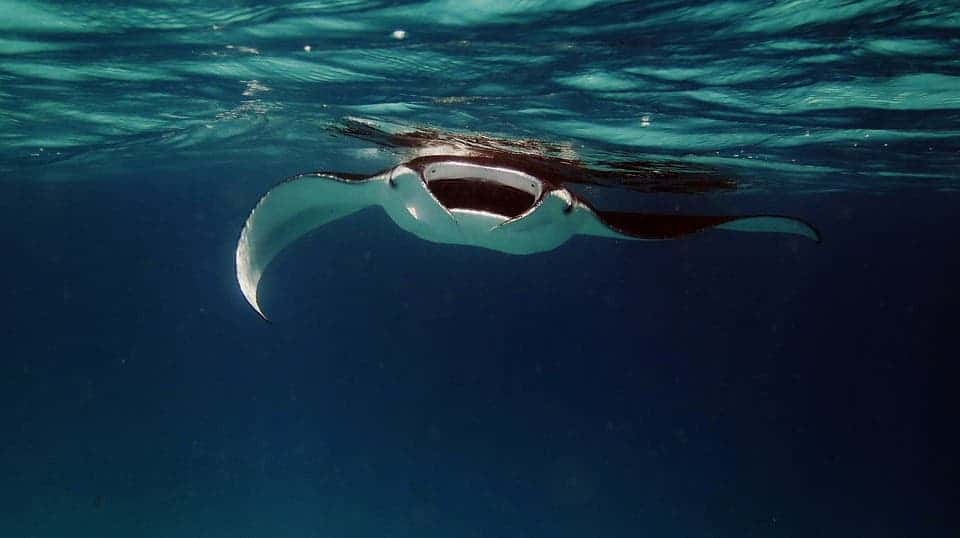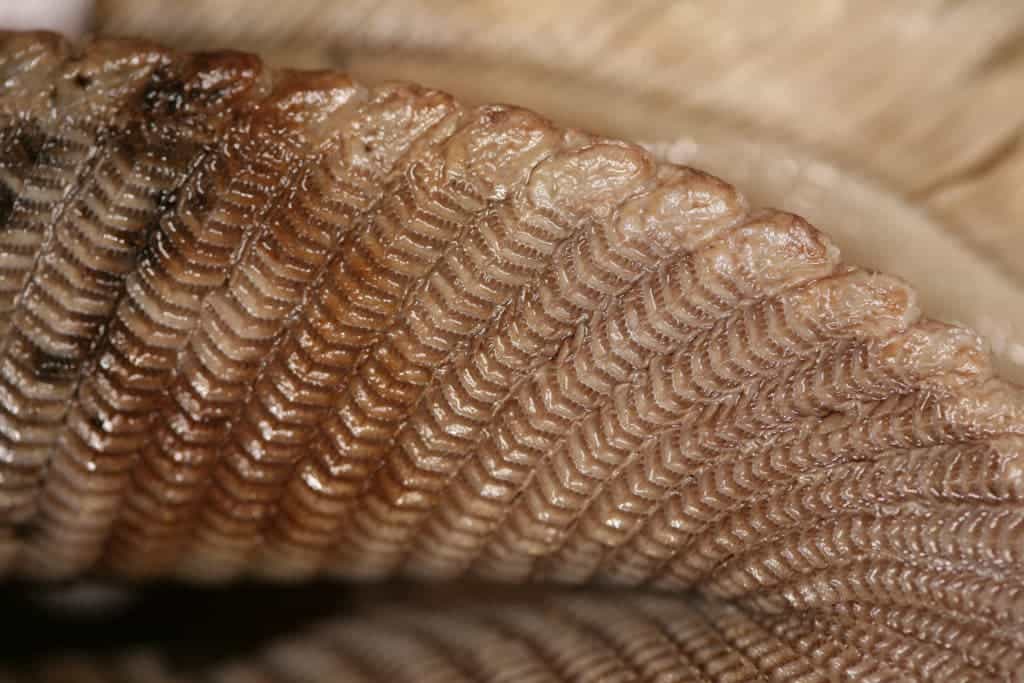
The devilish-looking manta ray spends most of its day on the sea floor, foraging for plankton with its mouth wide open. They can go for up to ten minutes without closing their mouths, and even then just for a brief moment. You’d think that this car-sized filter feeder would get clogged, but judging from countless observations the manta ray doesn’t seem to have any problems. It doesn’t even cough as some other sieving creatures do in order to clear debris from their filters.
Writing in the journal Science Advances, researchers at the California State University, Fullerton, describe how the remarkable animal pulls off this feat. It seems like the fish uses a previously unknown filtration system that allows food particles and other debris to glide over its straining system rather than through it.

The manta ray’s mouth is lined with V-shaped rods called gill arches that feature comb-like teeth protruding both forward and backward. Each tooth is lined with small flaps that overlap and when water hits each flap, it forms swirling vortices. This way, particles of food don’t get sucked down through crevices, but instead get pushed up, concentrating in the ray’s mouth. The particles never really get into the filter, which is kept clean.
The researchers showed how the ray’s sieving works both theoretically with models of the Giant oceanic manta ray (Manta birostris) and experimentally with washing colored dyes.
Remarkably, the fish evolved this self-cleaning filtration that extracts solid food from liquid currents while cleaning the sieve in the process. No other animal is known to feed in this way, although the researchers suspect that other creatures may employ the same mechanism. Some whales or the Hawaiian bobtail squid are listed as possible candidates, which other studies might confirm that they use the same feeding system.
By understanding how the ray’s filtration system works, scientists may one day design bio-inspired technologies that never clog. For instance, the authors hope to build a system that removes algae from freshwater and, ultimately, they would like to sieve microplastics from wastewater directly at processing plants.
Unfortunately, manta rays are now listed as vulnerable to extinction due to a sudden spike in fishing. Historically, humans were never interested in manta rays because their meat was never appealing to consumers. However, their gill rakers are in demand on Asian markets, where they’re grounded into a powder which supposedly has detox properties. There is no evidence that the product has any cleansing effects.
Was this helpful?



